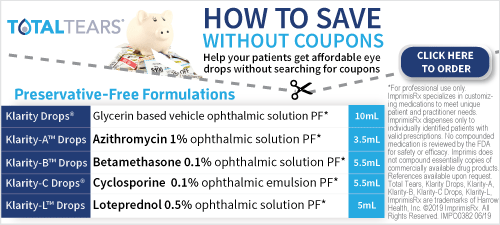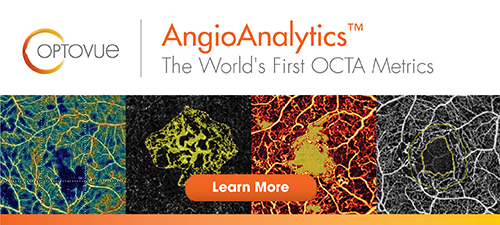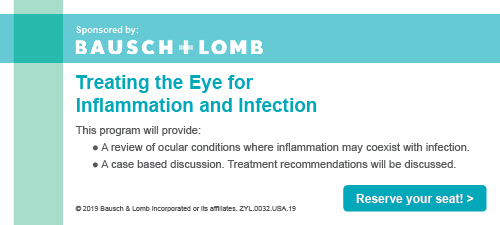
A
weekly e-journal by Art Epstein, OD, FAAO
Off the Cuff: VSP Shows Its Hand
If you were worried about the two VSP Eyeconic retail stores in Chicago, you can now relax. Recently, VSP Global announced its intention to acquire San Antonio-based Visionworks, a chain of 700 optical stores in nearly 40 states. The truth is that while VSP was once formed by independent optometrists supporting independent optometric practice, today, VSP Global is now all about “new retail development, acquisition, joint venture, and partnership opportunities” as part of a long-term strategy. The old VSP was about growing your practice, the new VSP is about opening optical stores. Not that they don’t have a good reason: The stores will be more profitable for VSP and will intentionally and directly compete with your practice. Since VSP already has access to all of your patients, it won’t take long before many practices will be so weakened that VSP’s “joint ventures and partnership opportunities” will be the only way out and at bargain-basement prices (for VSP). If you are a Premier Program location, you will likely be spared for a while since VSP already largely controls your operations and you make VSP more money than the average VSP provider does. If you are hoping that this is the part where I offer a solution to what is a very serious issue that threatens the viability of our profession, you’re wrong. Many practices are in so deep there is no way out—not unless every VSP provider works together to neutralize the threat. But you, I and VSP know that will never happen.
|
|||||
 |
||
| Distribution of Keratoconus Indices in Normal Children Six to 12 Years of Age | ||||
This cross-sectional study was conducted in children living in urban and rural areas of Shahroud, northeast Iran in 2015 to determine the distribution of keratoconus indices in normal children six to 12 years of age. After careful optometric examinations, the Pentacam was used for corneal imaging and measurement of keratoconus indices.
Of 5,620 students who participated in the study, the data of the right eye of 4,947 children were analyzed after applying the exclusion criteria. The mean age of all children was 9.23±1.71 years (range: 6 to 12 years). The mean and 95% confidence intervals (in the parentheses) of index of surface variance (ISV), index of vertical asymmetry, keratoconus index (KI), central keratoconus index (CKI), index of height asymmetry, index of height decentration (IHD) and average pachymetric progression index (PPIAve) was: 17.770 (17.610 to 17.930), 0.137 (0.135 to 0.139), 1.022 (1.022 to 1.023), 1.010 (1.010 to 1.010), 3.299 (3.230 to 3.368), 0.007 (0.007 to 0.008), and 0.948 (0.943-0.952), respectively. The results of multilevel mixed-effects linear regression analysis showed that ISV, KI, CKI, IHD and PPIAve were significantly higher in girls. Index of surface variance and CKI were higher in urban students, and PPIAve was higher in rural students. Except for PPIAve, which was increased with increasing age, the mean values of other keratoconus indices were significantly lower in 12-year-old students compared with six-year-old ones. Researchers wrote that the results provide valuable information about normal distribution of keratoconus indices in children ages six to 12 years. These findings can be used in future research and detection of abnormal cases in the clinical setting. |
||||
SOURCE: Hashemi H, Heydarian S, Khabazkhoob M, et al. Distribution of keratoconus indices in normal children 6 to 12 years of age. Eye Contact Lens. 2019; Jun 20. [Epub ahead of print]. |
||||
 |
||
| Increased Nighttime Blood Pressure in Patients with Glaucoma: Cross-sectional Analysis of the LIGHT Study | ||||
An observational, cross-sectional study was conducted to determine whether the presence of glaucoma was associated significantly with nighttime blood pressure (BP) and dipping patterns. Investigators assessed 109 glaucoma patients (mean age, 71 years) were assessed from the Longitudinal Study of Biological Circadian Rhythms in Glaucoma Patients: Home Testing of Circadian Intraocular Pressure and Biological Parameters (LIGHT) study and 708 healthy control participants without glaucoma (mean age, 70.8 years) from a community-based cohort. All of the glaucoma patients and healthy control participants underwent ophthalmic examinations. The ambulatory BP was measured every 30 minutes for 48 hours. The daytime and nighttime periods were based on the sleep diary entries. A nondipper pattern of BP was defined as a decrease in the mean nighttime systolic BP by less than 10% of the mean daytime systolic BP.
After adjusting for potential confounders, multivariable linear regression analyses indicated that nighttime systolic BP was significantly higher by 4.1mm Hg in the glaucoma group than in the control group. The prevalence of the nondipper pattern was significantly higher in the glaucoma group (45%) than in the control group (27.5%). Multivariable logistic regression analyses indicated a significantly higher odds ratio (OR) for the nondipper pattern in the glaucoma group than in the control group. The presence of glaucoma was associated significantly with increased nighttime BP and the nondipper pattern of the BP, independent of potential confounders such as aging, obesity and diabetes. Investigators wrote that further prospective studies would be needed to determine whether the glaucoma severity and progression were associated with the nighttime BP. |
||||
SOURCE: Yoshikawa T, Obayashi K, Miyata K, et al. Increased nighttime blood pressure in patients with glaucoma: cross-sectional analysis of the LIGHT study. Ophthalmology. 2019; May 25. [Epub ahead of print]. |
||||
 |
||
| Corneal Endotheliitis as a Presentation of Acanthamoeba Keratitis | ||||
Two contact lens wearers, who had been diagnosed with herpes simplex virus (HSV) keratitis, predominantly manifested corneal endotheliitis composed of corneal edema, keratic precipitates and anterior chamber reaction at referral. Acanthamoeba keratitis (AK) was confirmed using cultures or through polymerase chain reaction testing. The patients were started on polyhexamethylene biguanide and responded favorably to regain satisfactory visual acuity. Corneal endotheliitis, although uncommon, may be a manifestation of AK. Researchers suggested that clinicians be suspicious about AK in all contact lens users, particularly before making a diagnosis of HSV keratitis. They added that accurate diagnosis and prompt treatment can result in a favorable prognosis for AK. |
||||
Hsu CW, Liu CH, Hsiao CH. Corneal endotheliitis as a presentation of Acanthamoeba keratitis. Eye Contact Lens. 2019; Jun 18. [Epub ahead of print]. |
||||
 |
||
| News & Notes | ||||||||||||||||||||||
| Visioneering Technologies Creates Educational Series for ECPs Visioneering Technologies, developer of NaturalVue (etafilcon A) Multifocal 1 Day Contact Lenses, created a new educational series for eye care practitioners featuring some of the world’s leading researchers and clinicians. The series is free for ECPs. Read more. |
||||||||||||||||||||||
| X-Cel Offers Optimum Infinite Hyper Dk GP Lens Material X-Cel Specialty Contacts is now manufacturing sclerals and corneal GPs in the new Optimum Infinite hyper Dk GP lens material. This material from Contamac is designed to be stable, wettable, scratch-resistant and easy to handle by practitioners and patients. Its properties make it ideal for scleral lenses, while its versatility matches the requirements of corneal lens designs. Optimum Infinite has received FDA clearance for a full range of indications, including myopia, hyperopia, astigmatism and aphakia. Learn more. |
||||||||||||||||||||||
|
||||||||||||||||||||||
|
Optometric Physician™ (OP) newsletter is owned and published by Dr. Arthur Epstein. It is distributed by the Review Group, a Division of Jobson Medical Information LLC (JMI), 11 Campus Boulevard, Newtown Square, PA 19073. HOW TO ADVERTISE |




